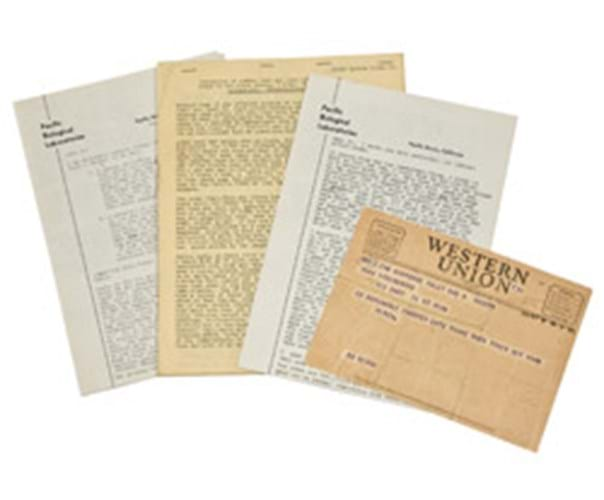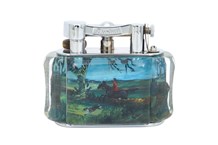
The two had met in 1930 and Ricketts, a marine biologist and ecologist as well as the writer's close friend, was his collaborator on The Sea of Cortez (1941), a journal of their travels and marine research in the Gulf of California. Ricketts' more familiar literary memorial, perhaps, is as the model for the character Doc, the sympathetic, wise and lonely owner of the Western Biological Laboratory in Steinbeck's Cannery Row (1945).
Ricketts was a great influence on Steinbeck, and in Cannery Row he describes the character he based on his friend as a man "who would listen to any kind of nonsense and change it for you into a kind of wisdom. His mind had no horizon and his sympathy had no warp".
That fateful Western Union telegram, along with an assortment of correspondence and longer typed accounts by Ricketts of trips made along the Pacific shores in 1945 and '46, all contained in Ricketts' own leather briefcase, took $18,000 (£12,130) at Bloomsbury Auctions' sale in New York on June 23.
It was part of a much larger archive that came originally from the New York apartment in which Steinbeck and his third and last wife, Elaine, had lived together for 13 years. Steinbeck died in 1968, but Elaine survived him by 35 years and, as often happens when the dispersal of an estate involves a multi-layered family, there was some delay in reaching an equable settlement. The books, manuscripts, letters, photographs and personal effects that eventually came to Bloomsbury have been tied up for the past six or seven years.
The Ricketts lot was very successful, but the dispersal was overall somewhat disappointing. An attempt to sell the archive as a single lot (estimate $200,000-250,000) failed and when the lots were then offered separately, around half failed to sell and few managed even low-estimate sums. However, a job lot of pipes, spectacles, lighters, keys, etc., sold well at $2400 (£1615) and a group of 16mm films and audio tapes, the latter including a recording of Steinbeck reading his 1957 story, The Crap Shooter, reached $3400 (£2290).
Successful autograph material included an 11pp piece, titled Roots, about Steinbeck's Irish ancestry, which sold at $4200 (£2830), and the biggest lot in the archive, comprising some 750 reference and other books, some firsts and some inscribed, managed $10,000 (£6740).
By Ian McKay




